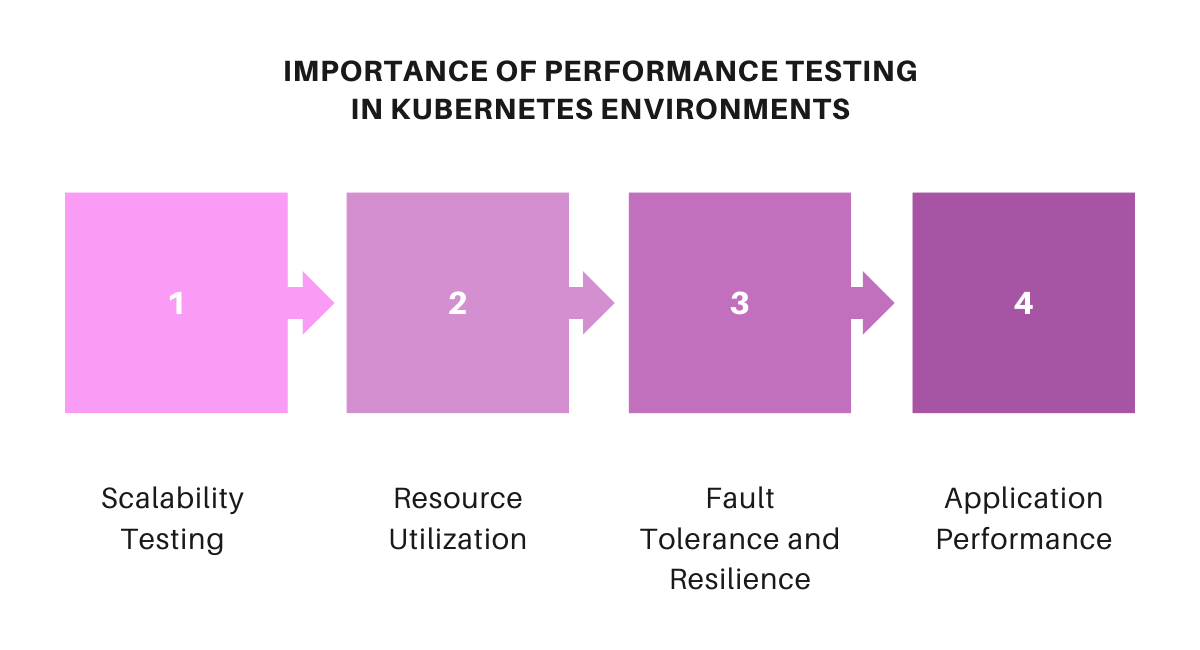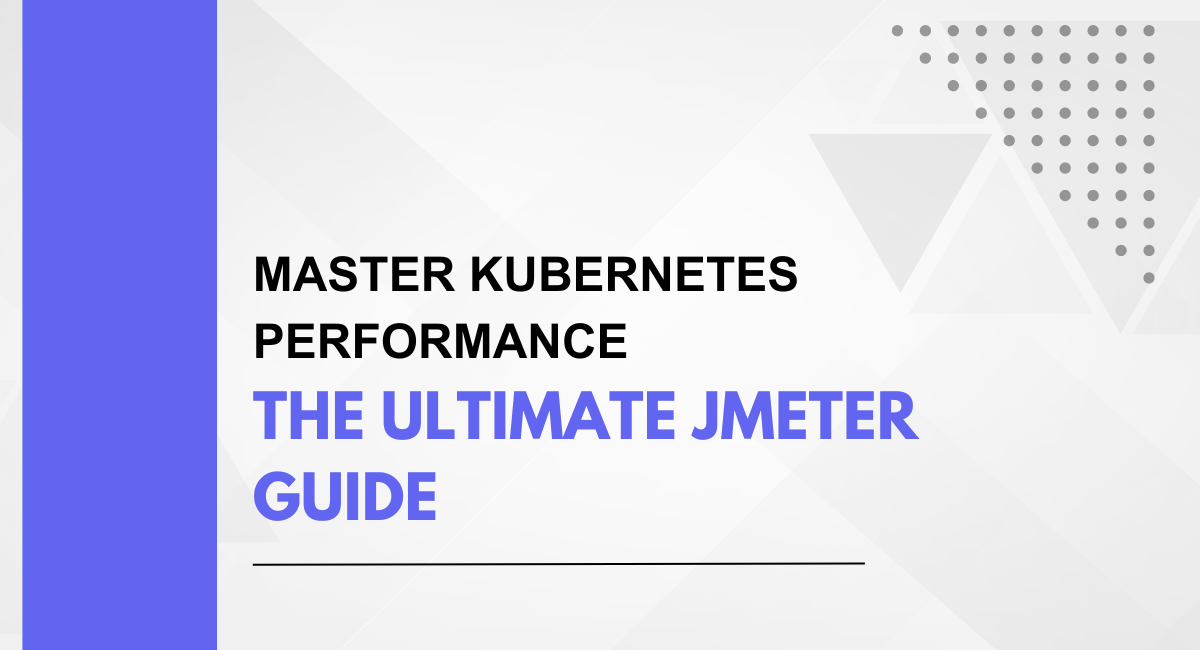Kubernetes, often abbreviated as K8s, is an open-source container orchestration platform that automates the deployment, scaling, and management of containerized applications. Developed by Google and now maintained by the Cloud Native Computing Foundation (CNCF), Kubernetes provides a robust and flexible framework for orchestrating containers, allowing developers to deploy and manage applications seamlessly across clusters of machines. Key features of Kubernetes Performance include:
- Container Orchestration: Kubernetes automates the deployment, scaling, and operation of application containers. It abstracts the underlying infrastructure and provides a unified API for managing containerized applications.
- Scaling and Load Balancing: Kubernetes allows automatic scaling of applications based on demand. It also provides load balancing to distribute traffic among multiple instances of an application.
- Service Discovery and Networking: Kubernetes provides mechanisms for service discovery and networking, enabling containers to communicate with each other and external services.
- Self-healing: Kubernetes monitors the health of containers and automatically restarts or replaces failed instances, ensuring high availability.
As per the World Quality Report 2021, available at World Quality Report 2022-23 Fourteenth Edition (microfocus.com), LoadRunner commands a market share of 42%, with JMeter experiencing a growth in market share to 23%.
Importance of Performance Testing in Kubernetes Environments

Performance testing is crucial in Kubernetes environments for several reasons:
- Scalability Testing: Kubernetes enables the dynamic scaling of applications. Performance testing helps assess how well the system scales under increasing loads, ensuring that it can handle growing workloads efficiently.
- Resource Utilization: Kubernetes allows fine-grained control over resource allocation to containers. Performance testing helps optimize resource utilization, preventing over-provisioning or under-provisioning of resources.
- Fault Tolerance and Resilience: Kubernetes promotes fault tolerance through features like self-healing. Performance testing helps validate the system's ability to recover from failures and maintain performance during disruptions.
- Application Performance: Testing the performance of applications within Kubernetes ensures that they meet response time and throughput requirements. It also helps identify bottlenecks and optimize the application's performance.
Role of JMeter in Kubernetes Performance Testing

Apache JMeter is a popular open-source tool for performance testing and load testing of applications. In the context of Kubernetes, JMeter plays a vital role in:
- Load Testing: JMeter can simulate a large number of users, making it suitable for load testing Kubernetes applications. This helps evaluate how well the system performs under various levels of concurrent user activity.
- Stress Testing: JMeter can be used to stress-test Kubernetes clusters by applying load beyond their capacity. This helps identify the breaking points and potential weaknesses in the system.
- Resource Monitoring: JMeter can monitor the performance of Kubernetes resources such as pods, nodes, and services. This allows testers to analyze resource utilization and identify performance bottlenecks.
- Integration with CI/CD Pipelines: JMeter can be integrated into Continuous Integration/Continuous Deployment (CI/CD) pipelines to automate performance testing as part of the development lifecycle. This ensures that performance is considered early in the development process.
Setting Up Your Kubernetes Environment for Performance Testing
A. Provisioning Kubernetes Clusters
Provisioning a Kubernetes cluster is the first step in preparing your environment for performance testing. Several tools can help with this process, such as:
- Minikube: Minikube is a tool that enables you to set up a single-node Kubernetes cluster on your local machine for testing and development purposes.
- Kubeadm: Kubeadm is a tool for bootstrapping Kubernetes clusters, simplifying the process of setting up multi-node clusters. It is suitable for production-like environments.
- Managed Kubernetes Services: Cloud providers offer managed Kubernetes services (e.g., Google Kubernetes Engine, Amazon EKS, Microsoft Azure Kubernetes Service). These services simplify cluster provisioning and management, allowing you to focus on performance testing.
Ensure that your chosen provisioning method aligns with your testing requirements and environment specifications.
B. Configuring Pods and Nodes for Performance Testing
Once the cluster is provisioned, configure the pods and nodes to optimize performance testing:
- Resource Allocation: Define resource requests and limits for pods to ensure efficient resource utilization. This is crucial for understanding how your application performs under specific resource constraints.
- Node Scaling: If your performance testing involves scaling applications across multiple nodes, configure the cluster to support horizontal scaling. This ensures that the testing environment closely resembles a production setup.
- Network Configuration: Adjust network settings to simulate real-world conditions. For example, configure network policies, set up Service meshes, and consider network latency to mimic a production environment accurately.
- Storage Configuration: If your application relies on storage, configure persistent volumes (PVs) and persistent volume claims (PVCs) appropriately. This is especially important for performance testing scenarios involving data persistence.
C. Installing and Configuring JMeter in Kubernetes
Integrating JMeter into your Kubernetes environment involves the following steps:
- Dockerizing JMeter: Package JMeter as Docker images to facilitate deployment and execution within Kubernetes pods. Create a Dockerfile that includes the necessary JMeter components and dependencies.
- Creating JMeter Scripts: Develop JMeter test scripts that simulate the desired user interactions with your application. Ensure these scripts are well-defined and cover relevant performance testing scenarios.
- Configuring JMeter Master and Slave Nodes: For distributed testing, configure a JMeter master node and multiple slave nodes within Kubernetes pods. JMeter master coordinates the test execution, and slaves generate the load.
- Deploying JMeter on Kubernetes: Use Kubernetes manifests (YAML files) to define deployments, services, and other resources needed to run JMeter in the cluster. Deploy the JMeter master and slave pods.
- Monitoring and Logging: Implement monitoring and logging mechanisms to capture performance metrics during testing. Tools like Prometheus and Grafana can be integrated into your Kubernetes cluster for real-time monitoring.
- Executing Performance Tests: Initiate performance tests by running JMeter scripts through the master node. Monitor and analyze the results to identify performance bottlenecks, assess scalability, and optimize resource utilization.
Best Practices for Optimizing Kubernetes Performance with JMeter
A. Optimizing Resource Allocation in Kubernetes
Efficient resource allocation is crucial for achieving optimal performance in Kubernetes environments. Follow these best practices:
- Define Resource Requests and Limits: Set resource requests and limits for containers in your Kubernetes pods. This helps Kubernetes allocate resources effectively and prevents resource contention. Use the Kubernetes resource model (CPU and memory) to specify the minimum and maximum resources a container requires.
- Right-Size Containers: Analyze the resource requirements of your application components and adjust container sizes accordingly. Overprovisioning or underprovisioning containers can impact performance.
- Utilize Horizontal Pod Autoscaling (HPA): Implement HPA to automatically adjust the number of replica pods in a deployment based on observed CPU or memory utilization. This ensures your application scales dynamically in response to varying workloads.
B. Scaling Applications for Increased Workloads
Scalability is a key consideration in performance testing. Ensure your applications can handle increased workloads smoothly:
- Horizontal Scaling: Leverage Kubernetes features for horizontal scaling by deploying multiple instances (replicas) of your application. This allows Kubernetes to distribute traffic and load across the instances.
- Load Balancing: Implement Kubernetes Service resources to expose your application and enable load balancing across pods. This ensures even distribution of traffic and prevents individual pods from becoming performance bottlenecks.
- Distributed Testing: Utilize JMeter's distributed testing capabilities to distribute the load across multiple JMeter instances. This aligns with the Kubernetes approach to distributed and scalable application deployments.
- Monitor and Adjust: Continuously monitor the performance of your applications during load testing. Use tools like Prometheus and Grafana to track metrics and adjust scaling configurations based on observed performance.
Book a Demo and experience ContextQA testing tool in action with a complimentary, no-obligation session tailored to your business needs.
C. Identifying and Resolving Performance Bottlenecks
Identifying and addressing performance bottlenecks is crucial for achieving optimal performance. Use the following practices:
- Performance Monitoring: Implement comprehensive monitoring tools to collect performance metrics from your Kubernetes cluster. Monitor CPU usage, memory usage, network latency, and other relevant metrics.
- Use APM Tools: Integrate Application Performance Monitoring (APM) tools to gain insights into application-level performance. These tools can help identify issues within the application code and dependencies.
- Analyze Test Results: Thoroughly analyze JMeter test results to identify performance bottlenecks. Look for patterns such as high response times, increased error rates, or resource saturation.
- Optimize Application Code: Collaborate with developers to optimize application code and database queries. Address any identified inefficiencies or performance bottlenecks at the application level.
- Optimize Database Queries: Optimize database performance by reviewing and optimizing queries. Ensure that the database is appropriately indexed and that queries are structured efficiently.
- Review Network Configuration: Examine network configurations, including the use of Service meshes and network policies. Network-related bottlenecks can impact communication between pods and services.
- Implement Caching: Introduce caching mechanisms to reduce the load on backend services. Caching can significantly improve response times for frequently requested data.
By incorporating these best practices, you can optimize the performance of your applications running in Kubernetes environments and ensure they can scale effectively to meet varying workloads. Regular performance testing, monitoring, and continuous optimization are essential for maintaining optimal performance over time.
Master Performance
By incorporating these principles into your Kubernetes performance testing strategy, you can navigate the complexities of modern application development successfully. Remember that the goal is not only to identify and address performance issues but also to build a resilient and scalable application infrastructure that can evolve with the dynamic demands of the digital landscape.
You may also be interested in: Master Page Object Model (POM): Streamline Test Automation
We make it easy to get started with the ContextQA tool: Start Free Trial.
